
Many people associate the U.S. Department of Housing and Urban Development (HUD) with low-income public housing and HUD-Code mobile homes, aka manufactured housing. But the agency’s influence extends far beyond these areas. It funds, incentivizes, and performs research on building materials and methods that have significantly impacted the industry.
HUD’s research and financial support, for example, benefited the development and market acceptance of PEX water pipes, air admittance valves, heat pump technologies, water-resistive barriers, and vapor-pervious paints. (I have worked on demonstration projects with HUD, witnessing the early stages of development and acceptance of these materials.)
HUD also funded some of the first LEED for Homes projects and recently collaborated on the development of new vacuum insulated panels (VIPs) with Oak Ridge National Laboratories (ORNL) and Home Innovations Labs, achieving thin continuous insulation panels of R-20 per in.
Many builders don’t know that HUD is a driving force in homebuilding modernization. Recognizing the public is generally unaware of its deeper work, the agency has taken steps to showcase its support of advancing technology in housing. It organizes an annual Innovative Housing Showcase on the National Mall—an event I attended this year from June 7 through 9. It featured various displays ranging from entire homes demonstrating the speed of panelized construction to off-grid emergency shelters and various individual technologies, a few of which I will highlight here.
3D-printed panels
Combining Portland cement–free 3D printing with robotics and materials science, Mighty Buildings has amassed an extensive project portfolio using what Brian Annechino, vice president of business development, describes as factory-made 3D-printed panels that are more robust yet lighter than concrete, and that can be customized to any plan. The panels are assembled on-site; using them is said to cut construction times by more than half. They include a 3D-printed shell, a polymeric and steel composite frame, foam insulation, and an interior magnesium oxide (MgO) board.
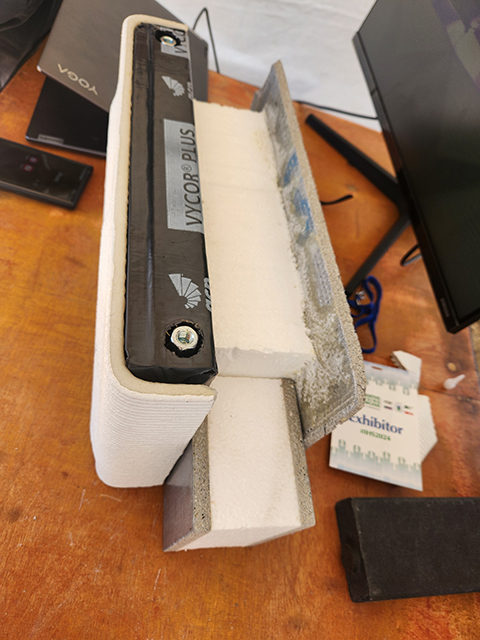
The panels are printed using patented composite stone material called LUMUS and coated with an epoxy-based primer and acrylic paint. Because the panels are impermeable and airtight, no air or water barriers are needed. The company has two types of panels, one for low-rise residential and another with a steel frame that scales four stories. Annechino says the composite stone panels comprise 60% “sustainably sourced and recycled components.” (He didn’t expound.) The R-value for walls can be customized; the demonstration assembly was R-20.
Vacuum insulated panels
One issue with continuous exterior insulation is panel thickness, which can be as much as 4 in. to achieve an R-20 value. This girth makes it difficult to install under siding and combine with trim, especially in retrofit applications. This is the problem ORNL’s ultra-high insulating panel (R-20 per in.) aims to solve. Researchers achieved this R-value by placing insulating materials in an airtight envelope and then removing the air to create a vacuum, explained Diana Hun, Ph.D., team leader of the Building Envelope Materials Research Science Division.
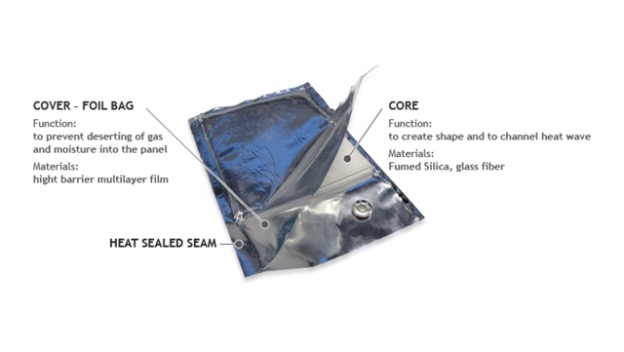
Because of their internal vacuum, these panels are five to ten times better at reducing heat losses and gains through building walls and roofs than conventional materials such as polystyrene and fiberglass insulation.
For the last two years, HUD has funded a production and installation program at Home Innovations Labs to help introduce vacuum-insulated panels to the marketplace. I participated in this research. The problem with VIPs is maintaining the vacuum since any puncture will thwart the material’s performance.
Dr. Hun says Oak Ridge is researching self-healing envelopes with barriers that auto-seal cuts and punctures and maintain the internal vacuum. They are also experimenting with low-carbon materials to use for the core. Hun showed me a 1/4-in.-thick sample made with a wood fiber core that delivered R-5.
Once researchers solve the problem of nailing siding through this sheathing and manufacturers begin producing it, builders will have a much easier time constructing high-performance shells, especially when retrofitting older structures.
Moisture-absorbing paint-primer
The chemists at Adept Materials have developed a primer and paint combination that sucks moisture from the air and stores it. In a bathroom painted with Adept’s climate-regulating paint, the finish will prevent condensation on the walls and ceiling, according to Ilya Rushkin, principal chemist. The paint absorbs and holds moisture while the “unique directional moisture control” primer beneath prevents the moisture from penetrating the substrate.
“When the relative humidity in the room drops again, the paint gradually releases the water vapor back into the air,” explained Rushkin, who also claims the molecular structure of the paint is unfriendly to microbial growth and cools the room slightly. The coatings have broad applications beyond wall paint, with treatments to keep wood products, such as OSB, at optimum moisture content levels.
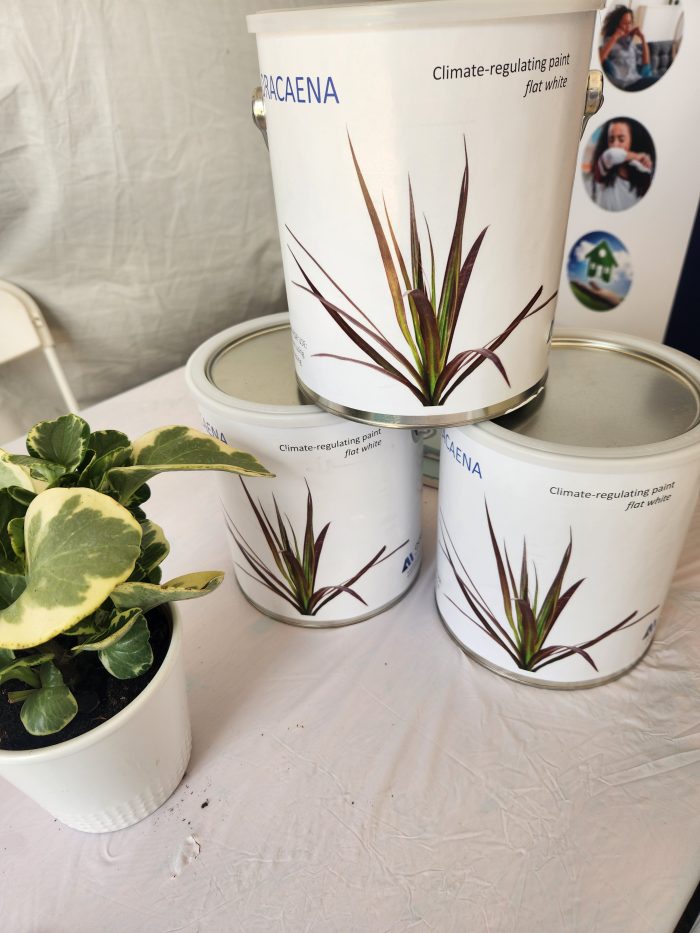
In short, this experimental, two-layer system stores humidity when levels are high and releases it as the relative humidity drops. The material is not on the market yet.
Off-grid sanitation solution
Most of the whole-house exhibits at the Innovative Housing Showcase were tiny homes for off-grid living. They included solar panels, rainwater harvesting systems, and incinerating or composting toilets. One problem with these self-sufficient toilets that do not rely on water and sewer connections for waste disposal is that you must do dirty work—lugging off the waste to the compost bin or scooping out the ash. Solaris Toilet exhibited a mechanical loo solution with a piston to push waste into a biodigester. “Once a year, you call the septic tank service to pump out the tank,” explained Aaron Ewerdt, the inventor of the patented Solaris Toilet. However, it appears this solar-powered unit would be difficult to clean.
Toilet-leak alert
One of the significant sources of residential water loss is the toilet. A leaky one can waste 200 gallons of water daily, per the Environmental Protection Agency. Sensor Industries manufactures a remote valve that radio-reports leaky toilets to alert building managers of the problem.
While at the Sensor Industries booth, I heard someone report that installing the valves on an apartment complex reduced water consumption by 30% in one year. This seems like an extraordinarily high figure, but knowing which toilets may lose 200 gallons or more daily in a large apartment complex becomes a financial and ecological challenge that the low-cost SI-Flush Sensors may help to resolve. The company website includes case studies, including a 164-unit apartment complex in Ohio that invested $82,000 in installing the technology to save $87,492 in the first year of use.
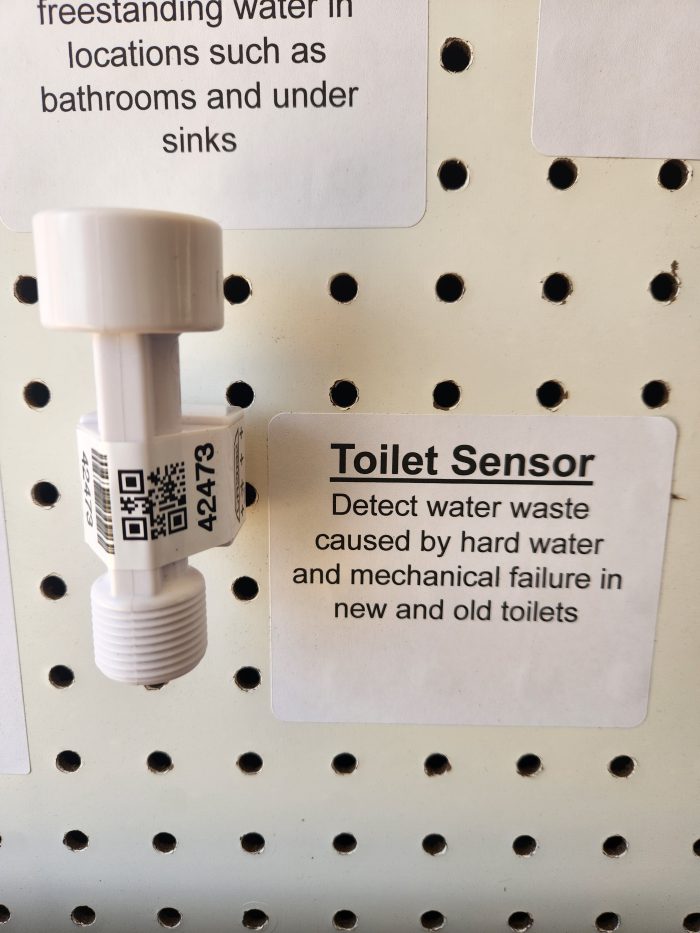
Heat-pump clothes dryer
Oak Ridge National Laboratory reports that clothes drying accounts for 4% of total residential electrical energy consumption in the U.S., primarily due to the electric resistance heating used in most dryers. At the ORNL booth, exhibitors displayed a range of heat-pump appliances, including water heaters, refrigerators with alternative cooling gases, and an experimental washer/dryer combo with a thermal battery to capture heat generated by the washer’s spin cycle. This improvement upgrades the heating capacity of the heat pump mechanism to match that of a conventional electric dryer.
Brian A. Fricke, a researcher at ORNL, highlighted the energy savings of the experimental dryer, which uses a solid-state thermoelectric heat pump, secondary water loops, and standard water-to-air heat exchangers, achieving an 85% energy efficiency improvement over traditional electric resistance dryers.
Other notables
Approximately 26,000 visitors explored 40 exhibits on the National Mall. Among the highlights were homes hastily constructed in a three-day frenzy before the event. There were several off-grid tiny homes, like the TinyBox, whose design was influenced by Zhang’s early experiences with poverty.
Additionally, two HUD-code duplexes were constructed following an update made to the Manufactured Home Construction and Safety Standards. Another standout was a full-size, two-story, 2400-sq.-ft. panelized house, assembled in a mere eight hours through a collaboration between the Structural Building Components Association (SBCA), 84 Lumber, and the National Framers Council (NFC).
Also worth mentioning is ORNL’s demonstration of its real-time building evaluator, designed to provide builders with precise prefab panel installation measurements to speed up the construction.
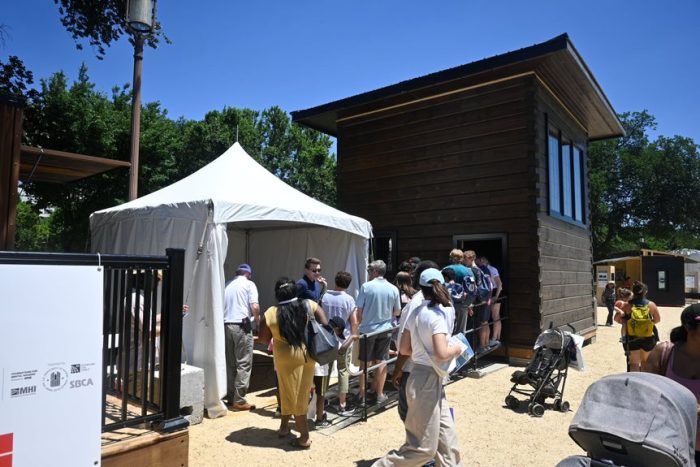
But far and away the most popular exhibit on the mall, drawing over 4000 visitors, was the C.I.E.R.S. House by DPZ/New Amherst Homes. C.I.E.R.S. stands for Compact, Independent, and Economical Residential System (and is a pun on Sears House). A sales price has not yet been established, but the plan is to distribute the homes as kits that can be easily carried through a narrow side yard into a backyard.
Wrap up
Michael Blanford, the research manager for the Affordable Housing Research and Technology Division, the organizing body behind the event, said the factory housing showcased this year was a direct outcome of HUD’s Operation Breakthrough—initiated in the late 1960s and now a technology embraced worldwide—as described in a recent New York Times article: How an American Dream of Housing Became a Reality in Sweden.
The annual Innovative Housing Showcase aims to shape public opinion regarding the advantages of prefabrication and advancing housing technologies. Based on the responses of the attendees I overheard, I believe HUD is accomplishing its mission. Unlike paid conferences that offer builders a glimpse of new housing technologies, the Innovation in Housing Showcase is free and open to the public.
The next step is convincing housing industry markets to embrace the innovations that are true problem solvers.
________________________________________________________________________
Fernando Pagés Ruiz is a builder and an ICC-certified residential building inspector active in code development. Images courtesy of author, except where noted.
Weekly Newsletter
Get building science and energy efficiency advice, plus special offers, in your inbox.











0 Comments
Log in or create an account to post a comment.
Sign up Log in